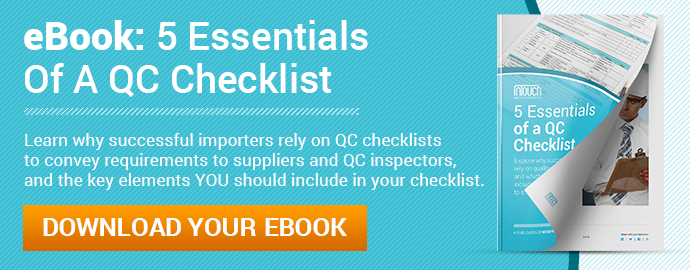Counterfeiting is a growing problem for electronics brands. Some studies have shown that the industry of counterfeit goods is worth up to $3 trillion, with electronics components making up a large share of that market.
Counterfeit parts are usually of lesser quality and may not function as intended - often resulting in equipment failure. Using counterfeit parts in your product can lead to serious consequences, such as financial losses, safety risks, and damage to your brand.
In this article, we will discuss ways that brands can identify counterfeit parts in their products and how to avoid becoming a victim of counterfeiting.
Why is counterfeiting so prevalent?
Most likely, the biggest reason why counterfeiting is so prevalent is because brands want to control cost as much as possible by sourcing from lesser-known suppliers. Doing so increases the risk of counterfeit parts, but the pressure to reduce costs is high so they take their chances.
How To Identify Counterfeit Parts
Counterfeit electronics parts are difficult to identify because they look very similar to the original part. The average person often cannot identify a counterfeit; it often takes an up close and detailed inspection by professional inspectors to spot the telltale signs.
Electronics brands need to have a documented and thorough inspection process to ensure the components being used are in line with the manufacturer’s specifications. Some key things to look for during a electric component inspection include:
- Incorrect labeling - look for spelling mistakes and inaccurate information. Make sure the information on the label matches the parts included.
- Part and date codes - Incorrect part and date codes are easy to spot. You can simply compare them to the codes on the original component to see if they match.
- Branding (logos & fonts) - Logos and fonts will often resemble that of the original manufacturer, but they will be of a lesser quality or slightly different.
- Missing parts or packaging - If the packaging is missing parts, like a dry pack to absorb moisture, it could be counterfeit. Also look out for low quality packaging such as cheap cardboard or plastic.
How to Avoid Counterfeit Parts
While it’s nice to be able to spot counterfeit parts, avoiding them all together is even better. Luckily there are systems in place to help you. Here are some steps brands can take to avoid accidentally using counterfeit parts:
- Source your parts from reputable suppliers - companies that have undergone the proper certification process can guarantee their parts are authentic. Make sure to verify your suppliers before doing business.
- Keep records of your parts - certify your parts and trace your suppliers to ensure that all components are coming from reputable sources. Make sure to conduct quality checks to cover all your bases.
- Watch out for suspiciously low prices - counterfeit parts are often sold for a fraction of what the original part costs. Make sure to compare prices to see if one supplier is dramatically lower than the others.
- Work with an unbiased third-party - Supplier audits and product inspections at every stage of the manufacturing process can help ensure that only authentic, manufacturer-grade parts are being used. Working with a third party quality control company can help you to enforce a stricter supply chain management processes.
Prevention Is the Best Solution
Counterfeit electronics parts are a problem that isn’t going away anytime soon. However, brands can protect themselves from negative perceptions and financial losses by taking the right steps.
Implementing a stricter supply chain management process is something all electronics brands should take into consideration. This involves supplier verification, product inspections, and function and safety tests to ensure your products are working properly.
AQF verifies your consumer electronics quality, specifications, functions, safety, and compliance with relevant standards applicable to your product’s destination in Europe, USA and more. Contact us today to learn more or sign up for AQF Online to book your next service.








